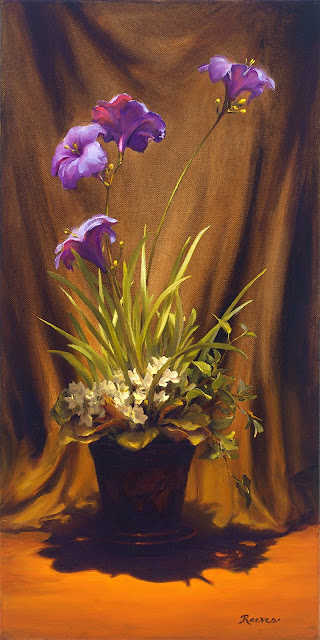
Greetings! I'm thrilled to announce my painting, "Reaching" was selected for the 2015 OPA National Exhibition!
Over 2,000 paintings were submitted by artists from Canada, the United States and Mexico, but only 218 paintings were selected! It was quite an honor to be among those selected!
On the evening of May1, 2015, OPA's Awards & Recognition Ceremony was a time to honor members' achievements, and for Juror of Awards, Huihan Liu OPAM, to announce the award winners, including the recipient of the coveted Gold Medal!
This year, the Gold Medal was given to Jonathan Stasko for his painting, "Pure Religion is This." It is an amazing piece that includes ten children! Jonathan used images sent to him by his sister who was in Uganda with folks who were digging wells so villagers would have fresh water. These children were among those blessed to finally be able to drink clean, fresh water, and Jonathan Stasko captured their personalities and reactions so beautifully! If you'd like to learn more about this incredible artist, you can visit his web site at: http://jonathanstasko.com/about/
If you ever get the opportunity to attend this national event, jump at the chance! It was inspiring, educational, entertaining and altogether worthwhile!! Best of all, it was a great opportunity to meet and stay connected with other artists who create "representational art!
NOTE: The Oil Painters of America Twenty-fourth Annual National Exhibition is being held at the Brilliance in Color Gallery, part of Cutter & Cutter Fine Art Galleries, in St Augustine, Florida from April 29 - May 25, 2015.

















































